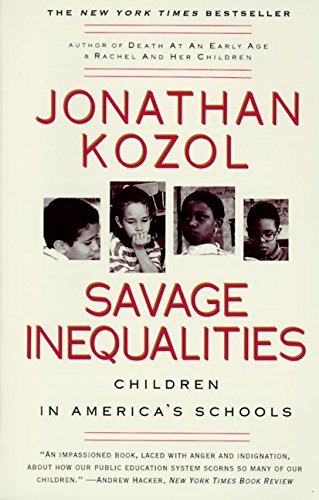Savage Inequalities Book Summary
Children in America's Schools
TL;DR
In 'Savage Inequalities,' Jonathan Kozol explores the stark disparities in the American educational system, illustrating how poverty and systemic racism undermine opportunities for children in disadvantaged communities.
What is Savage Inequalities about
'Savage Inequalities: Children in America's Schools' is a poignant examination of the vast educational disparities faced by children in America, particularly those from low-income and marginalized backgrounds. Jonathan Kozol, a National Book Award-winning author, draws on his firsthand observations of public schools across various cities, including Camden, New York City, and Chicago, highlighting the shocking differences in funding, resources, and educational quality. Through vivid narratives and personal accounts, Kozol reveals how these inequalities are deeply entrenched in a system that often disregards the needs of the most vulnerable children. The book serves as a powerful indictment of the American education system, calling for urgent reform to address the injustices that perpetuate inequality.
Savage Inequalities 5 Key Takeaways
Educational Disparities
Kozol illustrates the vast differences in educational quality across various regions, emphasizing that children in wealthier areas receive significantly better resources and opportunities compared to those in impoverished neighborhoods.
Impact of Poverty
The author underscores how poverty drastically affects students' educational experiences, leading to lower performance and fewer opportunities for future success.
Racial Inequality
Kozol highlights the intersection of race and education, showing how systemic racism contributes to unequal funding and resources in schools predominantly attended by children of color.
Voices of the Children
Through the stories and testimonies of students and teachers, Kozol gives a human face to the statistics, illustrating the real impact of these inequalities on children's lives.
Call to Action
The book serves as an urgent plea for reform in the American educational system, advocating for equitable funding and resources to ensure every child has access to a quality education.
Savage Inequalities Videos
Jonathan Kozol - Savage Inequalities - YouTube
Top Savage Inequalities Quotes
- "The savagery of inequality in America is that it exists within the very society that proclaims itself as a land of opportunity."
- "Children are the future of society; depriving them of a fair education is a crime against humanity."
Who should read Savage Inequalities?
'Savage Inequalities' is essential for educators, policymakers, and anyone interested in social justice. Readers will gain a deeper understanding of the systemic issues plaguing public education and be inspired to advocate for equitable solutions.
Savage Inequalities Best Reviews
- "An impassioned book, laced with anger and indignation, about how our public education system scorns so many of our children." -- New York Times Book Review
- "Kozol's work is essential reading for anyone concerned about the future of education in America; it's an eye-opening account that demands change." -- The Washington Post
People also liked these summaries
Savage Inequalities FAQs
What is the main idea of Savage Inequalities?
The main idea of 'Savage Inequalities' is to depict the stark educational disparities in America, emphasizing how poverty and systemic racism negatively impact children's learning opportunities.
What cities are highlighted in the book?
Kozol's observations take place in cities such as Camden, New York City, Chicago, Cincinnati, St. Louis, and Washington D.C., showcasing a range of funding disparities in schools.
